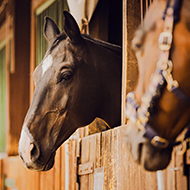Atypical BSE confirmed on Essex farm
There have been four cases of atypical BSE in the UK since 2015.
The Animal and Plant Health Agency (APHA) has confirmed a single case of atypical Bovine Spongiform Encephalopathy (BSE) on a farm in Essex.
The cow had displayed clinical signs of BSE and was humanely culled on the farm.
Following testing completed as part of Defra's routine surveillance programme, the disease was confirmed as atypical BSE. Defra confirms there is no risk to public health or food safety and that, as fallen stock, the animal was not destined to enter the food chain.
BSE is a chronic degenerative disease, which affects the central nervous system of cattle. It is non-contagious and does not spread between animals or holdings.
Classical BSE, first diagnosed in the UK in 1986, is usually linked to contaminated feed.
Atypical BSE, however, occurs in cattle spontaneously. It is occasionally reported in countries with active BSE surveillance programmes.
The most recent case of atypical BSE in the UK was in December 2024 in Scotland. Including this latest case, there have been four cases of atypical BSE in the UK since 2015.
Great Britain's overall risk status for BSE remains 'controlled'.
Christine Middlemiss, chief veterinary officer, said: “A single case of atypical BSE has been confirmed on a farm in Essex. The animal died on farm and was tested as part of our strict routine controls and surveillance regime.
“Atypical BSE is distinct from classical BSE and is a spontaneously and sporadically occurring, non-contagious disease which is believed to occur at a very low level in all cattle populations. This is proof that our surveillance system for detecting and containing this type of disease is working.”
Elizabeth Mullineaux, British Veterinary Association president, said “The fast identification of the disease is testament to a robust veterinary surveillance system that is effective in detecting potential risk.
“We would like to remind vets to refer to the government’s BSE guidance on the clinical signs and how to report any suspicious cases.”
The government’s BSE guidance can be found here.
Image © Shutterstock



 Zoetis has launched a new survey to identify management techniques for Equine Herpes Virus (EHV).
Zoetis has launched a new survey to identify management techniques for Equine Herpes Virus (EHV).